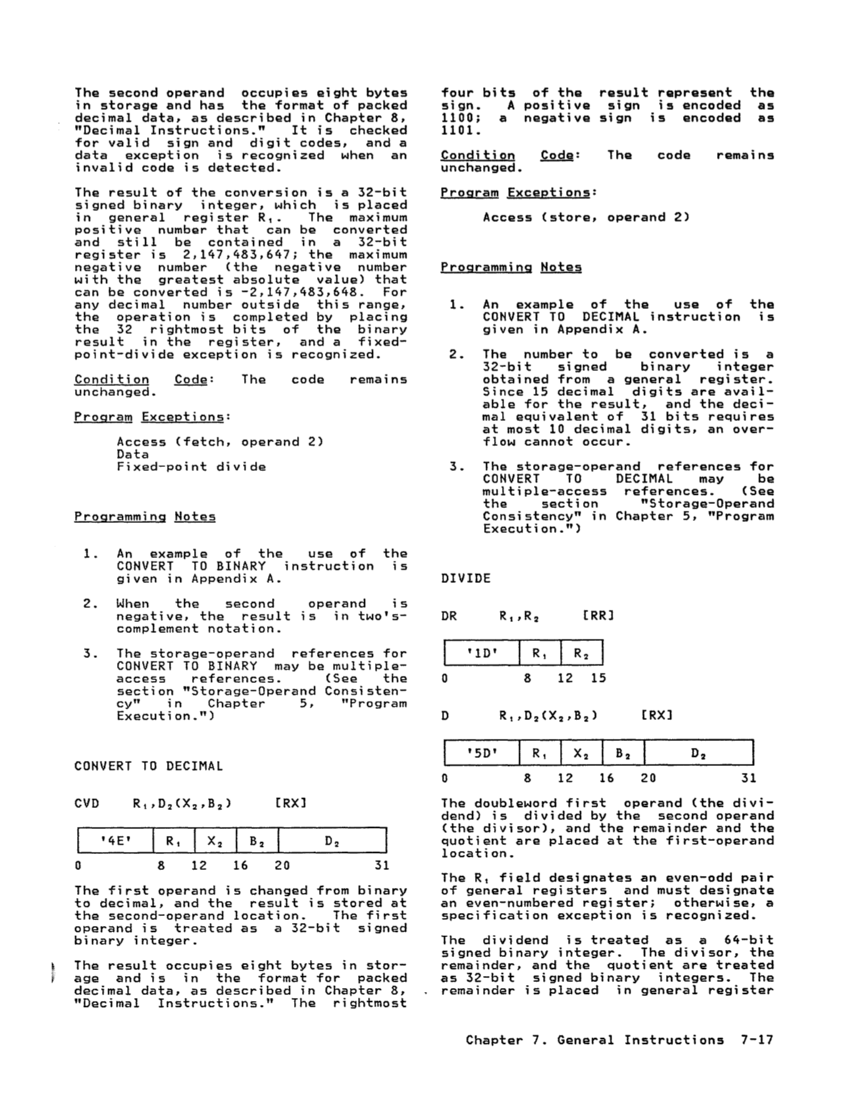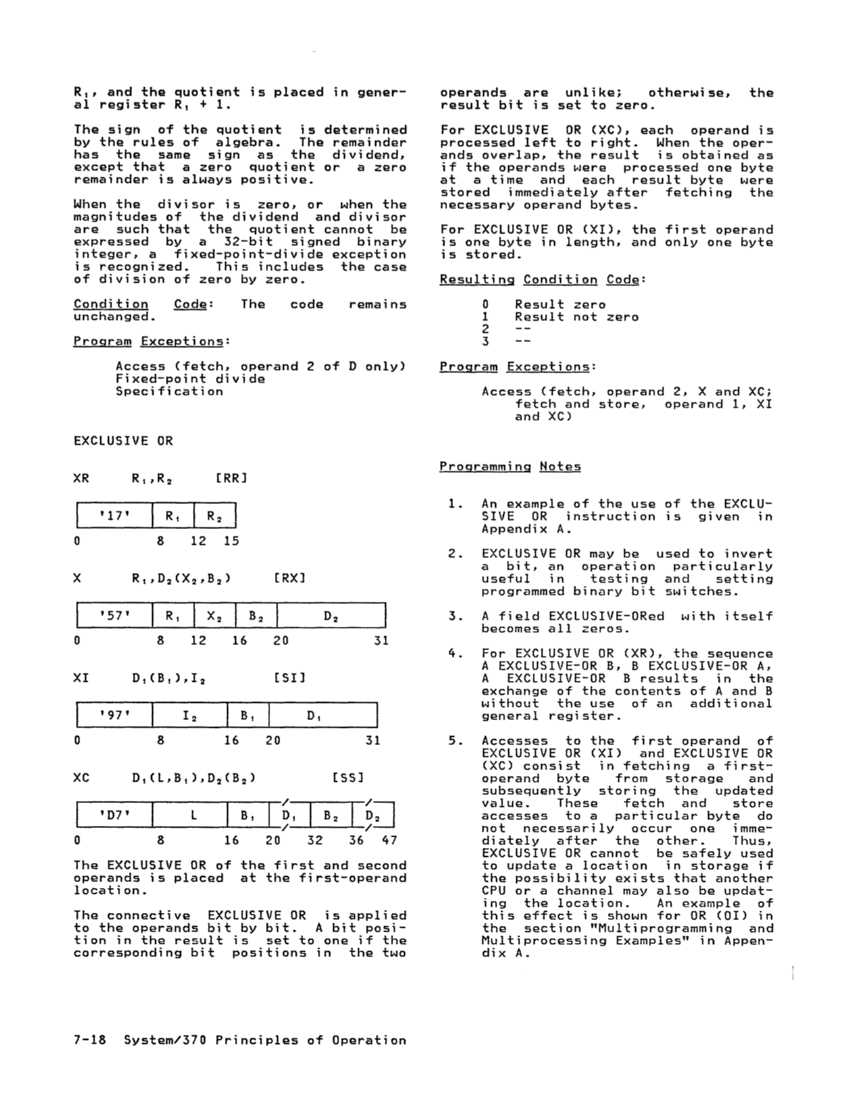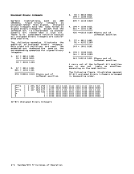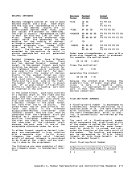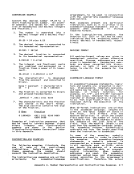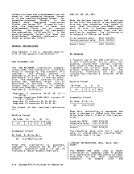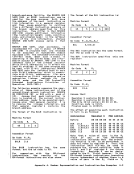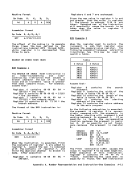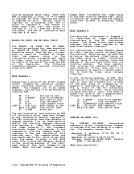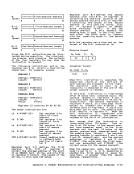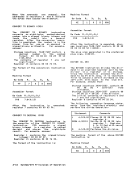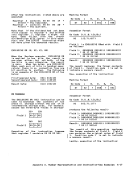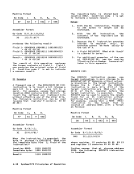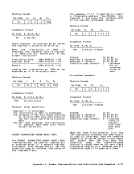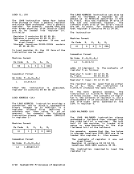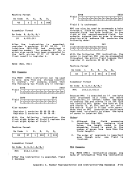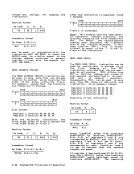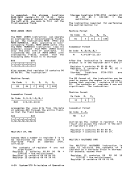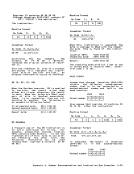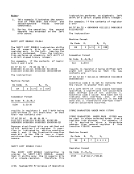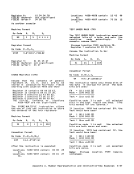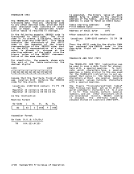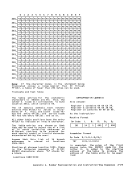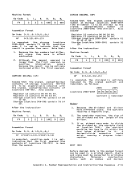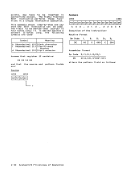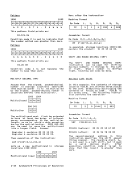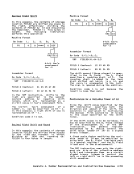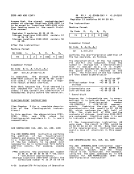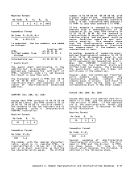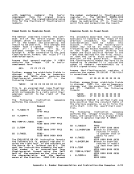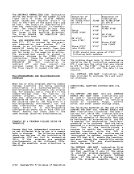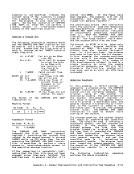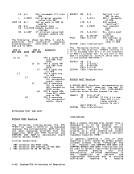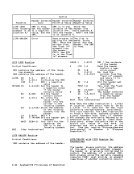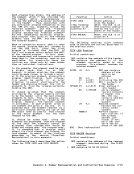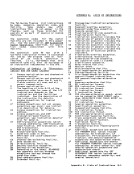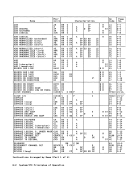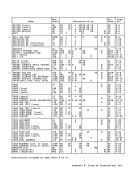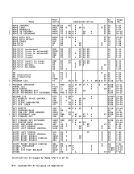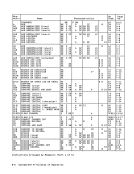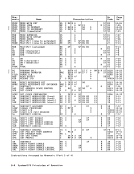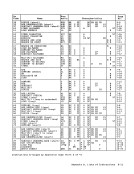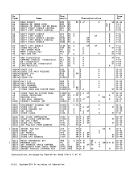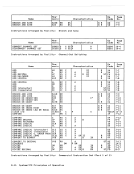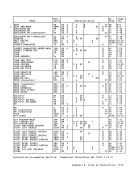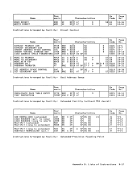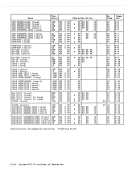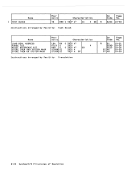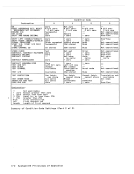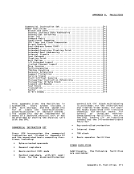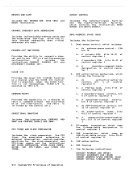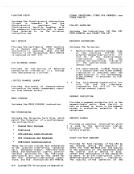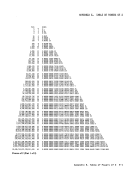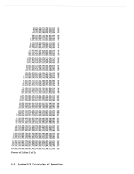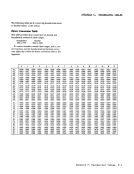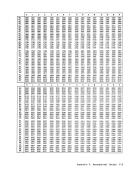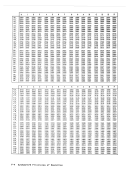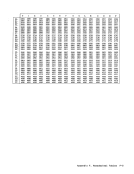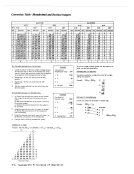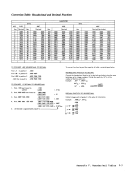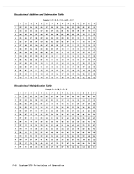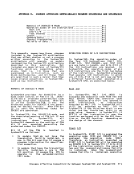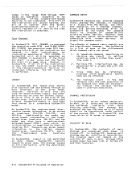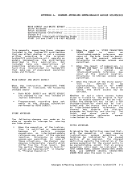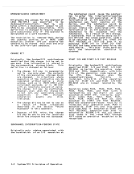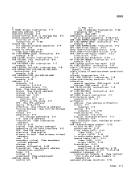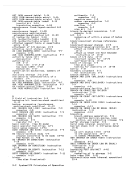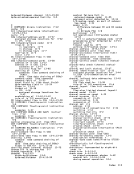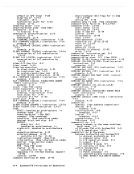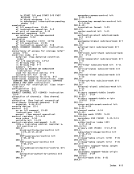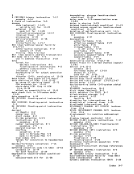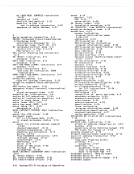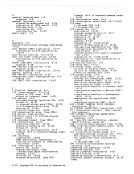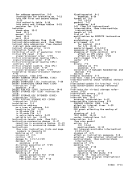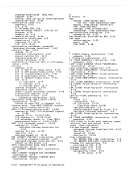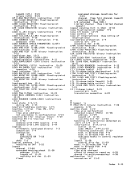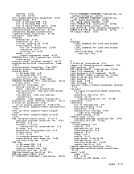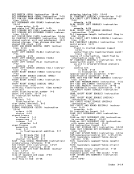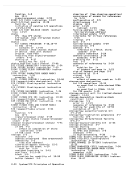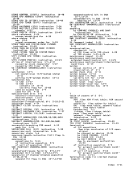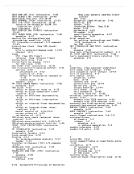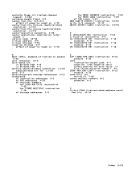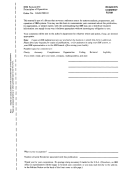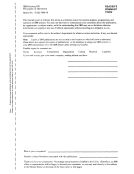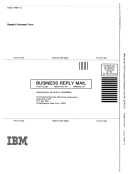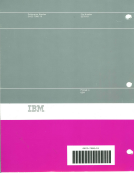The second operand occupies e;ght bytes in storage and has the format of packed
decimal data, asdescribed in Chapter 8, "Decimal Instructions." It is checked
for validsign and digit codes, and a
data exception is recognized when an
invalid code is detected.
The result of the conversion is a 32-bit
signed binary integer, whichis placed in general register R t • The maximum
positive number that canbe converted
and stillbe contained in a 32-bit
register is 2,147,483,647; the maximum
negative number (the negative number
with the greatest absolute value) that
can be converted is -2,147,483,648. For
any decimal number outside this range,
the operation is completed by placing
the 32 rightmost bits of the binary
resultin the register, and a fixed
point-divide exception is recognized.Condition Code: unchanged.
The code remains
Program Exceptions:
Access (fetch, operand 2)
Data
Fixed-point divide
Programming Notes
1. An example of the use of theCONVERT TO BINARY instruction is
given in Appendix A.
2. When the second operand is
negative, the result is in two's
complement notation.
3. The storage-operand references forCONVERT TO BINARY may be multiple
access references.(See the
section "Storage-Operand Consistency" in Chapter 5, "Program Execution.") CONVERT TO DECIMAL o 8 12 16 20 31
The first operandis changed from binary
to decimal, and the result is stored at
the second-operand location. The first
operand is treated as a32-bit signed
binary integer.
The result occupies eight bytes in stor
age and is 1n the format for packed
decimal data, as described inChapter 8, "Decimal Instructions." The rightmost
four bits of the result representthe sign. A positive sign ;s encoded as 1100; a negative sign is encoded as 1101. Condition Code: unchanged.
The code remains
Program Exceptions:
Access (store, operand 2)
Programming Notes
1. An example of the use ofthe CONVERT TO DECIMAL instruction is
given in Appendix A.
2. The number to be converted isa 32-bit signed binary integer obtained from a general register. Since 15 decimal digits are avail
able for the result, and thedeci mal equivalent of 31 bits requires
at most10 decimal digits, an over
flow cannot occur.
3. The storage-operand references forCONVERT TO DECIMAL may be
multiple-access references. (See
the section"Storage-Operand Consistency" in Chapter 5, "Program Execution.") DIVIDE
DRR t , R2 [RRl '10' I R t I R2 I 0 8 12 15 0 R
t
,D
2
(X
2
,B
2
) [RXl'50 ' I R t I X 2 I B2 O
2 0 8 12 16 20 31
The doubleword first operand (the divi
dend) is divided by the second operand
(the divisor), and the remainder and the
quotient are placed at the first-operand
location.
The Rt field designates an even-odd pair
of general registers and must designate
an even-numbered register; otherwise, a
specification exception is recognized.
The dividend is treated as a 64-bit
signed binary integer. The divisor, theremainder, and the quotient are treated
as 32-bit signed binary integers. The
remainderis placed in general register Chapter 7. General Instructions 7-17
decimal data, as
for valid
data exception is recognized when an
invalid code is detected.
The result of the conversion is a 32-bit
signed binary integer, which
positive number that can
and still
register is 2,147,483,647; the maximum
negative number (the negative number
with the greatest absolute value) that
can be converted is -2,147,483,648. For
any decimal number outside this range,
the operation is completed by placing
the 32 rightmost bits of the binary
result
point-divide exception is recognized.
The code remains
Program Exceptions:
Access (fetch, operand 2)
Data
Fixed-point divide
Programming Notes
1. An example of the use of the
given in Appendix A.
2. When the second operand is
negative, the result is in two's
complement notation.
3. The storage-operand references for
access references.
section "Storage-Operand Consisten
The first operand
to decimal, and the result is stored at
the second-operand location. The first
operand is treated as a
binary integer.
The result occupies eight bytes in stor
age and is 1n the format for packed
decimal data, as described in
four bits of the result represent
The code remains
Program Exceptions:
Access (store, operand 2)
Programming Notes
1. An example of the use of
given in Appendix A.
2. The number to be converted is
able for the result, and the
at most
flow cannot occur.
3. The storage-operand references for
multiple-access references. (See
the section
DR
t
,D
2
(X
2
,B
2
) [RXl
2
The doubleword first operand (the divi
dend) is divided by the second operand
(the divisor), and the remainder and the
quotient are placed at the first-operand
location.
The Rt field designates an even-odd pair
of general registers and must designate
an even-numbered register; otherwise, a
specification exception is recognized.
The dividend is treated as a 64-bit
signed binary integer. The divisor, the
as 32-bit signed binary integers. The
remainder
